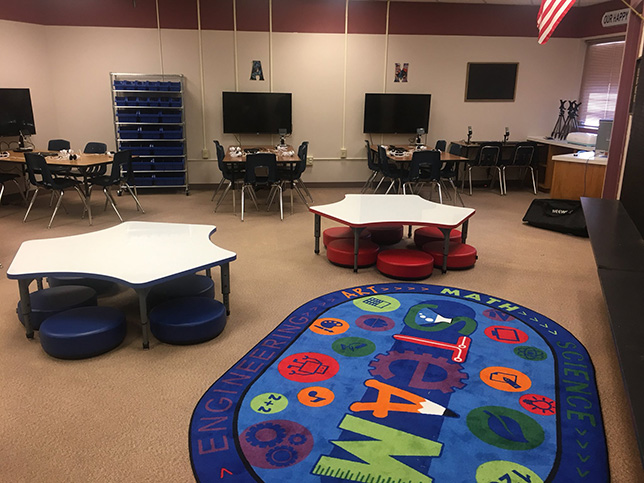Washington Elementary Transforms into STEAM School
- By Yvonne Marquez
- 09/12/19
Wide Hollow Elementary School recently changed their name to Wide Hollow STEAM Elementary to reflect their new focus on incorporating science, technology, engineering, arts and mathematics across their curriculum.

The Washington school transformed its computer lab into a STEAM lab. It was funded by a $10,000 grant from the state Office of Superintendent of Public Instruction. The lab is now equipped with the following:
- Art supplies;
- Age-appropriate robots;
- Five collaborative digital microscopes that project onto large monitors;
- A 3D printer;
- Podcasting stations;
- Video production station; and
- A die-cutting station.
Students also have access to programs like Makey Makey, which allows them to design and code using ordinary everyday things.
An emphasis on STEM lessons have increased over the last year so the lab was created to engage and prepare students from a younger age, but also incorporating art and creativity into the process.
Wide Hollow teachers are also starting to incorporate STEAM concepts into core course topics.
“Our main emphasis really is this is a way for students to…communicate, collaborate, solve complex problems…and then be creative,” Principal Rick Ferguson told the Yakima Herald. “Those are skills that are needed in any job, because we really don’t know. A lot of the jobs these kids are going into don’t exist currently. But those four things, the four C’s, they’re going to need those skills.”
About the Author
Yvonne Marquez is senior editor of Spaces4Learning. She can be reached at [email protected].